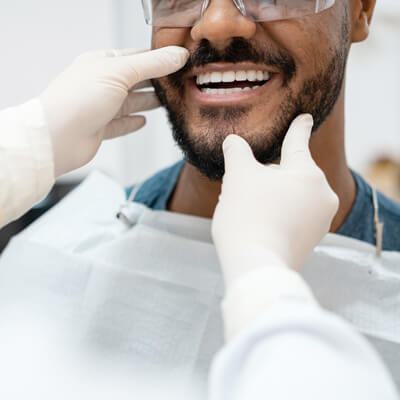Corrective Jaw Surgery (Orthognathic) in Brooklyn
 At Aesthetic Dental, our specialists provide surgical correction of the jaw. Surgery is needed when jaws and teeth don’t meet correctly. Repositioning the jaws so the teeth meet correctly improves jaw joint function and chewing ability and may also improve speech, breathing, sleep apnea, periodontal health, and facial aesthetics. This helps both in the case of congenital issues and any complex acquired pathologies.
At Aesthetic Dental, our specialists provide surgical correction of the jaw. Surgery is needed when jaws and teeth don’t meet correctly. Repositioning the jaws so the teeth meet correctly improves jaw joint function and chewing ability and may also improve speech, breathing, sleep apnea, periodontal health, and facial aesthetics. This helps both in the case of congenital issues and any complex acquired pathologies.
Most patients are referred to our clinic by an orthodontist when braces alone cannot solve the problem. By restoring the natural symmetry and harmony of the face, we normalize the bite, improving the quality of life.
Causes of Deviation in Jaw Formation
Jaw growth is a gradual process, and in some instances, the upper and lower jaws may not match at the end of growth. Injury to the jaw during development may also cause problems with the growth of the jaws. Problems with incorrect positioning of the jaws and bite issues usually occur around the ages of 10-13.
When the jaws deviate from their natural position, the position of the soft tissues is also affected. Cheeks, lips, nose, chin, cheekbones, and profile contour are subject to changes, which make a difference in forming a person’s appearance and facial expression.
Planning for the New Jaw
During the planning stage, our dental surgeon performs a CT scan of the patient’s head and upper neck, photographs the face in different projections, and designs dentition models. Based on the results of this thorough examination, a three-dimensional model of the face is made so the patient can see what the outcome will look like and make any changes.
In addition, changes in the volume of the airways of the nose and pharynx are calculated to reduce snoring. Our specialists are trained to think of every potential problem.
Start the Process Today
Our surgeons are experts at addressing the malformation of your jaw to give you the look you were meant to have—or better. Contact us today to learn more.
CONTACT US

